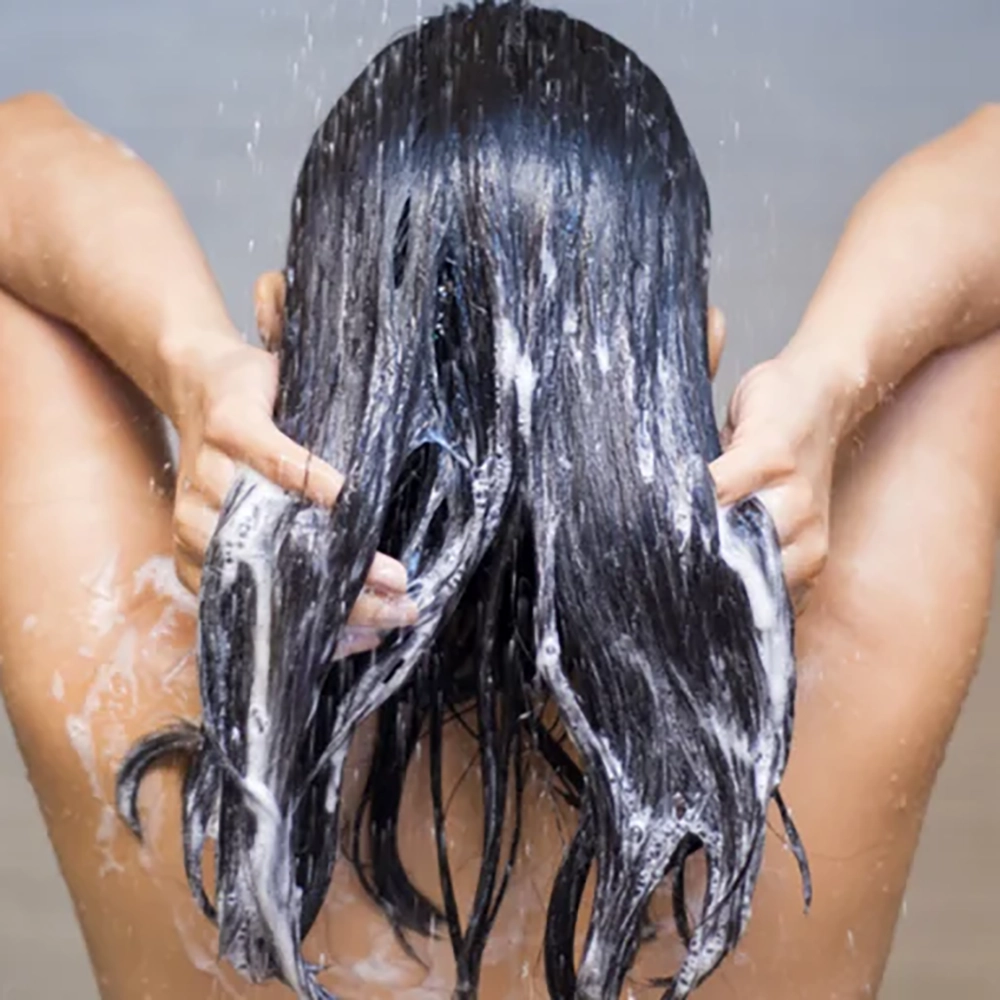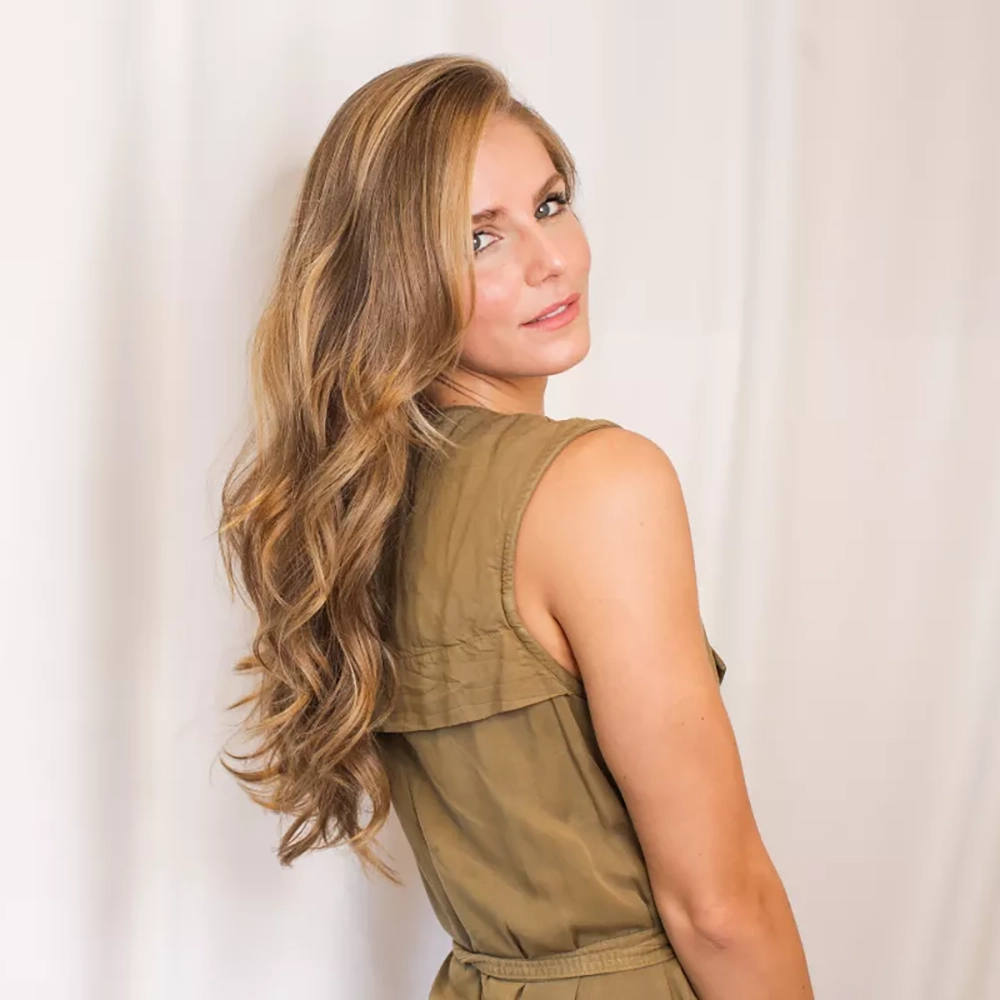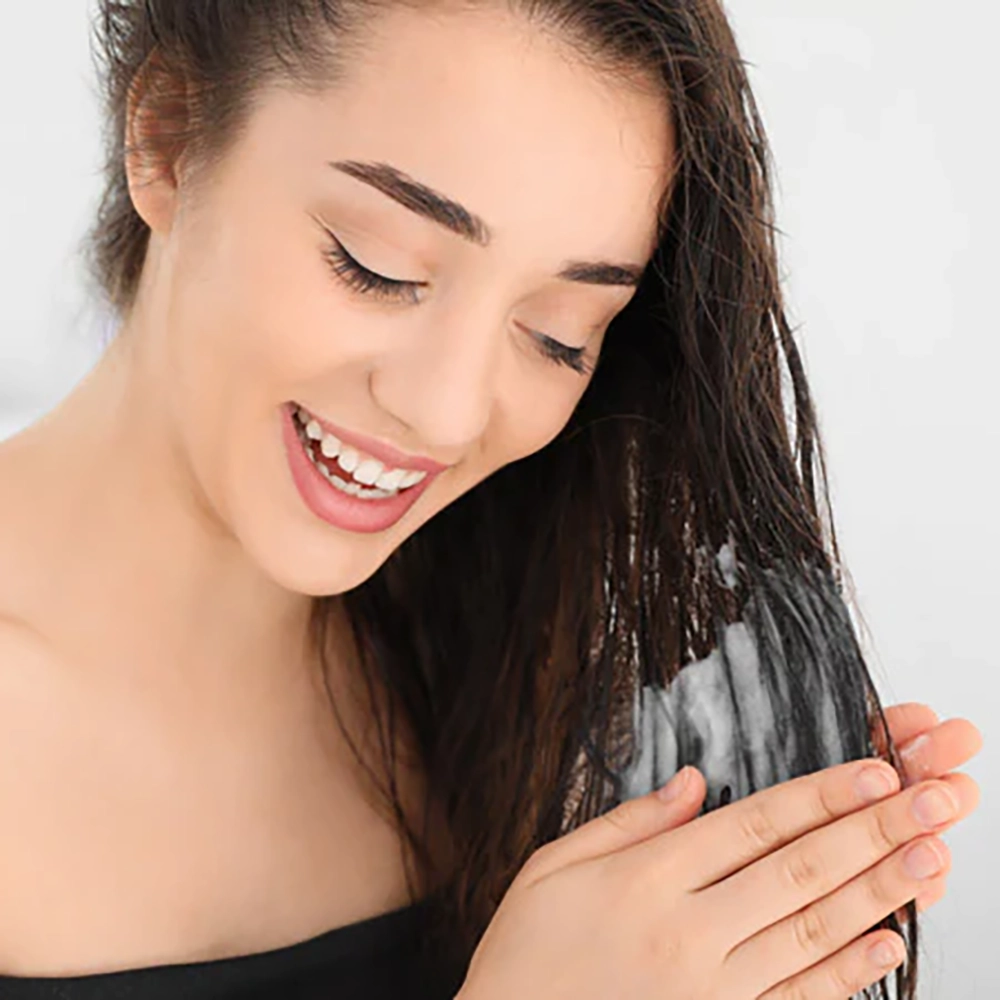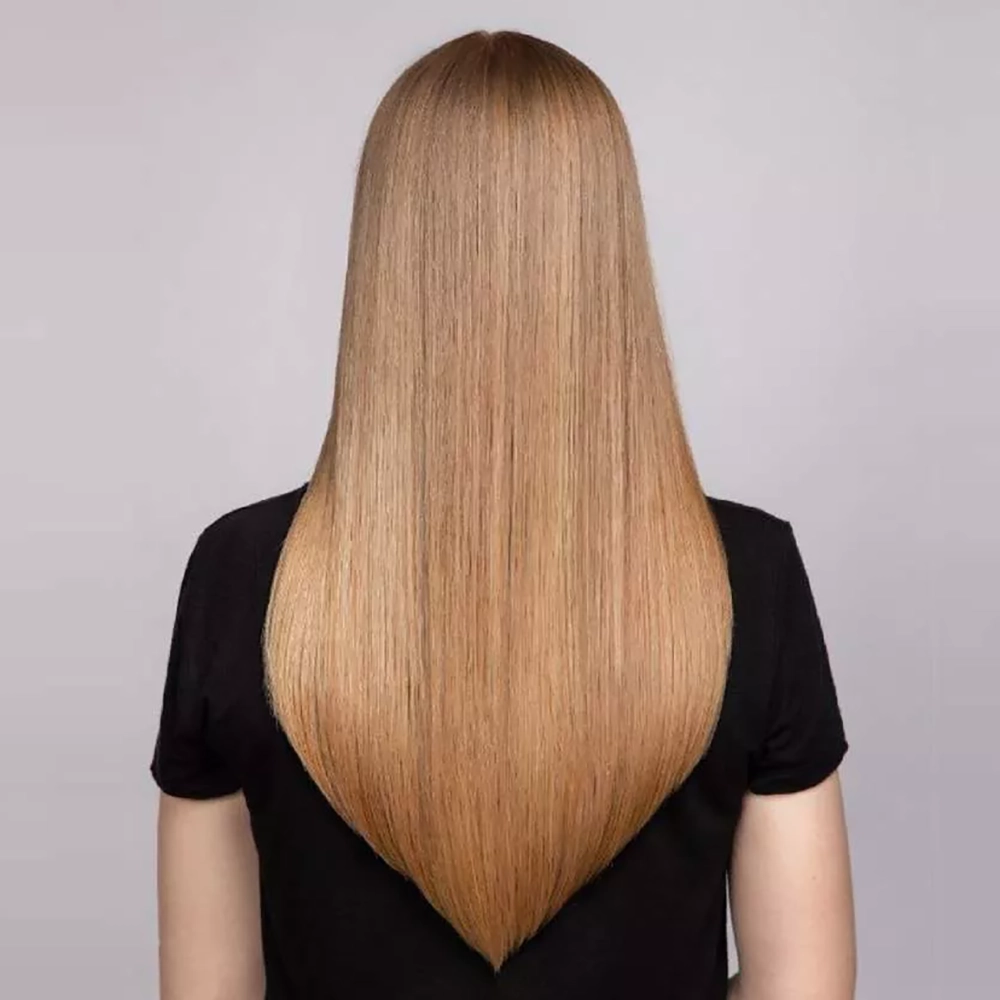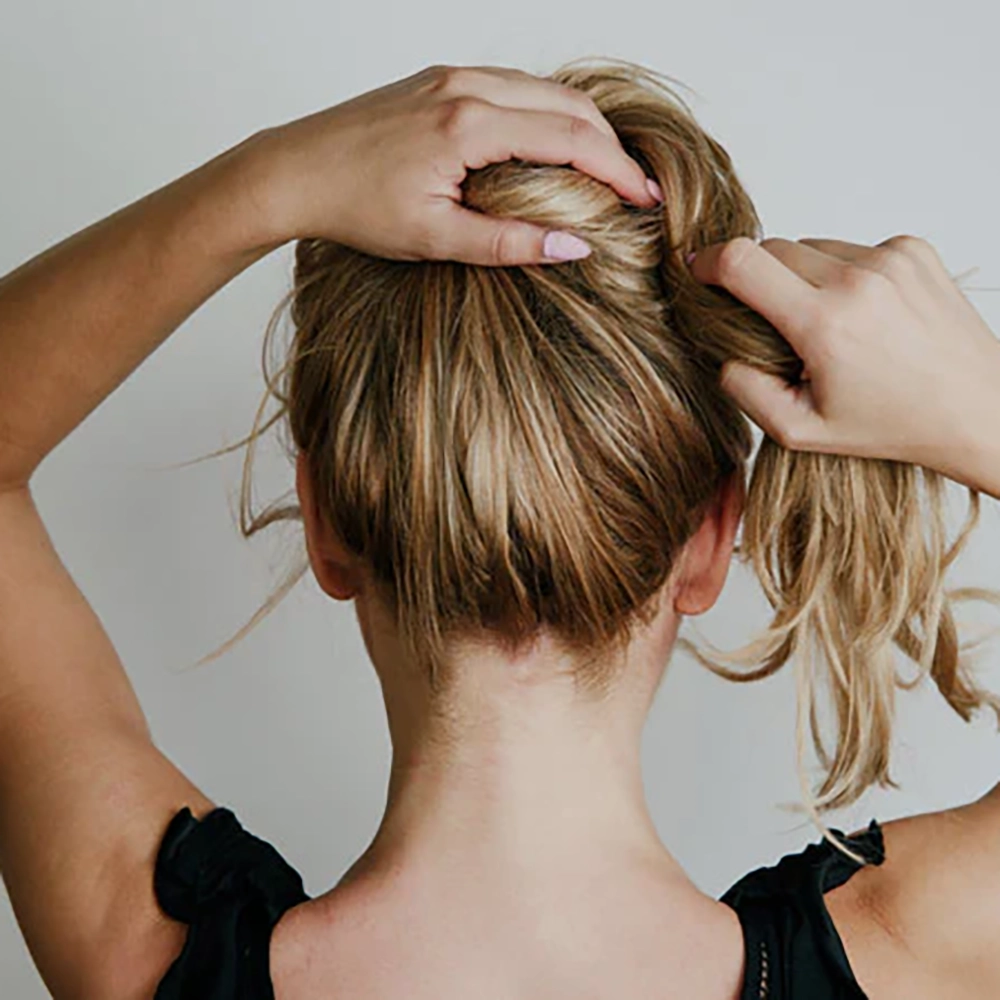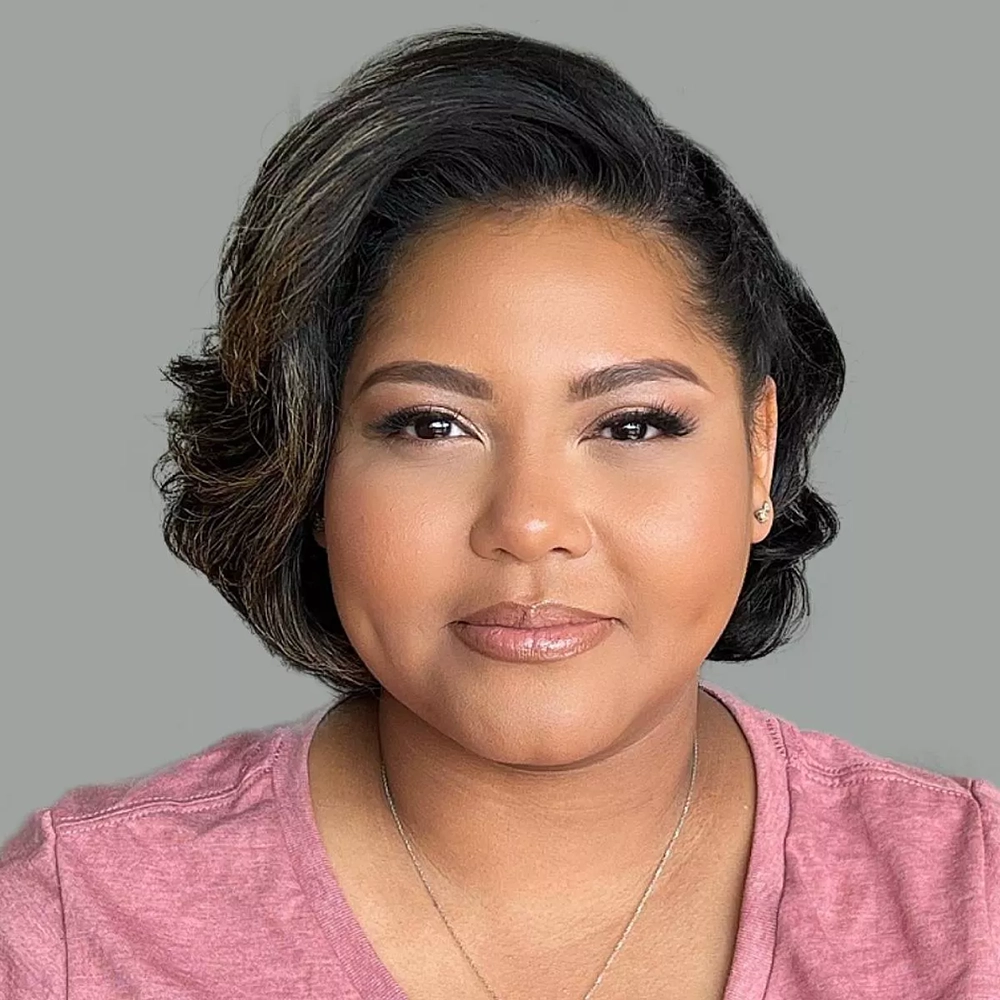Understanding your hair type and length
The first step in properly caring for your hair is understanding its type and length. By understanding these factors, you can tailor your hair care routine to meet the specific needs of your hair. There are several different hair types, including straight, wavy, curly, and coily, each with its own characteristics and care requirements.
One way to determine your hair type is by examining the shape of your hair strands. Straight hair typically has a round shape, while wavy hair has an oval or slightly S-shaped pattern. Curly hair has a more defined spiral or corkscrew shape, and coily hair forms tight, spring-like curls. You can also consider the thickness and density of your hair, as well as its porosity and elasticity, to further classify your hair type.
Knowing your hair length is also important as it can impact the products and styling techniques you use. Hair length is usually categorized as short, medium, or long. Short hair refers to hair that falls above the shoulders, while medium hair falls between the shoulders and the middle of the back. Long hair extends beyond the middle of the back.
- Straight hair: Straight hair tends to be smooth and sleek. It may be prone to oiliness and can appear flat or lacking in volume. To care for straight hair, choose lightweight shampoos and conditioners that won’t weigh it down.
- Wavy hair: Wavy hair has natural bends or waves that add texture. It can range from loosely textured waves to more defined curls. To enhance and define your waves, use products that provide moisture and hold.
- Curly hair: Curly hair is often more prone to frizz and dryness. It requires extra moisture and hydration to keep the curls bouncy and defined. Look for products specifically designed for curly hair that provide moisture and hold without weighing the hair down.
- Coily hair: Coily hair has tight, densely packed curls. It can be prone to dryness and shrinkage. Proper moisture and hydration are crucial for maintaining healthy coily hair. Use products that moisturize and nourish the hair to keep it soft and manageable.
Understanding your hair type and length is the foundation for creating a hair care routine that works for you. By identifying your hair’s unique characteristics and needs, you can choose the right products and techniques to keep your hair looking its best. So take the time to study your hair type and length, and embark on a journey toward healthier, more beautiful hair.
| Hair Type | Hair Length |
|---|---|
| Straight | Short, Medium, Long |
| Wavy | Short, Medium, Long |
| Curly | Short, Medium, Long |
| Coily | Short, Medium, Long |
Determining the right shampoo dosage
In order to achieve clean and healthy hair, it is essential to determine the right shampoo dosage. Using the correct amount of shampoo can make a significant difference in the overall effectiveness of your hair washing routine. Both using too little and using too much shampoo can have negative effects on your hair and scalp. Therefore, it is important to find the right balance.
When determining the ideal shampoo dosage, it is important to consider your hair type and length. Different hair types require different amounts of shampoo to effectively cleanse the scalp and hair follicles. While those with shorter hair may require less shampoo, individuals with longer or thicker hair may need slightly more.
The best way to determine the right shampoo dosage for your specific hair type and length is through trial and error. Start with a small amount of shampoo and gradually increase it until you find the perfect amount that adequately lathers and cleanses your hair without leaving any residue. Remember, it is always easier to add more shampoo if needed, but it is difficult to remove excess product once applied.
Here are some guidelines to consider when determining the right shampoo dosage:
- Start with a pea-sized amount of shampoo for short hair and increase gradually if necessary.
- For medium-length hair, a quarter-sized amount is generally sufficient.
- Individuals with long or thick hair may require a larger amount, approximately the size of a silver dollar. However, it is important to avoid excessive use as it can lead to product buildup and make rinsing difficult.
| Hair Type | Shampoo Dosage |
|---|---|
| Short Hair | Pea-sized amount |
| Medium-Length Hair | Quarter-sized amount |
| Long or Thick Hair | Size of a silver dollar |
Remember, every individual’s hair is unique, and the ideal shampoo dosage may vary. Pay attention to how your hair responds to different amounts of shampoo and adjust accordingly. By determining the right shampoo dosage, you can ensure that your hair is thoroughly cleansed and ready to face the day, while also preventing excessive product buildup and potential damage.
Factors that affect shampoo usage
Using the right amount of shampoo is crucial for maintaining healthy hair. However, the amount of shampoo you should use can vary depending on several factors. Understanding these factors can help you make more informed decisions about how much shampoo to use and how often to shampoo your hair.
Firstly, hair type and length play a significant role in determining shampoo usage. If you have long, thick hair, you may require more shampoo compared to someone with short, fine hair. This is because long hair typically has more surface area to cover and may accumulate more dirt and oil. On the other hand, using too much shampoo on short hair can strip away the natural oils and lead to dryness.
Secondly, scalp condition influences shampoo usage. If you have a dry scalp, using too much shampoo or using a harsh shampoo can exacerbate the dryness and cause irritation. In contrast, if you have an oily scalp, you may need to use a larger amount of shampoo and wash your hair more frequently to effectively remove excess oil.
Additionally, environmental factors can affect how often you need to shampoo your hair. If you live in a hot and humid climate, you may find that your hair gets oilier more quickly and requires more frequent washing. Likewise, if you frequently engage in activities that make you sweat, such as exercising or spending time outdoors, you may need to shampoo more often to keep your hair clean and fresh.
In conclusion, understanding the factors that affect shampoo usage can help you find the right balance for your hair. Consider your hair type and length, scalp condition, and environmental factors when determining how much shampoo to use and how often to shampoo. By customizing your shampooing routine to suit your unique needs, you can maintain healthy, clean hair.
Guidelines for shampooing long hair
Shampooing long hair can be a bit of a task, especially if you want to maintain its health and lusciousness. It’s important to follow some guidelines to make sure you are properly caring for your long locks while washing them. Here are a few tips to help you shampoo your long hair effectively:
1. Choose the right shampoo: When it comes to long hair, it’s crucial to select a shampoo that is specifically formulated for your hair type. Look for shampoos that provide nourishment, hydration, and strength. Avoid shampoos that contain harsh chemicals or sulfates, as they can strip your hair of its natural oils and cause damage.
2. Use the right amount: It’s easy to go overboard with shampoo when you have long hair, but using too much can lead to product buildup and weigh your hair down. Start with a quarter-sized amount of shampoo, and add more if necessary. Focus on the scalp and roots, as that’s where most of the oil and dirt accumulate.
3. Be gentle: Long hair is more prone to breakage, so it’s essential to be gentle while shampooing. Avoid rough rubbing or tugging your hair, as it can cause knots and create damage. Instead, use your fingertips to massage the shampoo into your scalp and lightly squeeze the suds down the length of your hair.
4. Rinse thoroughly: After shampooing, make sure to rinse your hair thoroughly to remove all the product. Any leftover shampoo can weigh your hair down and make it appear dull and lifeless. Rinse until the water runs clear and your hair feels clean.
5. Condition properly: Conditioning is crucial for long hair, as it helps to moisturize and detangle the strands. Apply conditioner from mid-length to the ends of your hair, avoiding the scalp. Leave it on for a few minutes before rinsing it out with lukewarm water.
By following these guidelines, you can ensure that your long hair stays healthy, shiny, and beautiful. Remember, it’s not only about shampooing but also about how you treat your hair throughout the entire hair care routine. Treat your long locks with love and care, and they will reward you with effortless beauty!
Effects of using too much shampoo
When it comes to shampooing our hair, many of us believe that using more shampoo will lead to cleaner and healthier locks. However, using too much shampoo can actually have negative effects on our hair and scalp. The excessive use of shampoo can strip away the natural oils that our scalp produces, leading to dryness and irritation. Additionally, using an excessive amount of shampoo can also cause our hair to become dull, brittle, and prone to breakage. It is important to understand the effects of using too much shampoo and take steps to prevent damage to our hair.
One of the main reasons why using too much shampoo can be harmful is because it can lead to over-cleansing of the scalp. Our scalp produces natural oils, known as sebum, which help to moisturize and protect our hair. When we use an excessive amount of shampoo, these oils are stripped away, leaving our scalp and hair dry. This can result in scalp itching, flaking, and overall discomfort. It is important to find a balance and use the appropriate amount of shampoo for your hair type and length.
Another negative effect of using too much shampoo is that it can leave a residue on our hair. This residue can make our hair appear dull, flat, and lifeless. Additionally, the residue can also weigh down our hair, making it difficult to style and manage. It is important to rinse our hair thoroughly after shampooing to ensure that all the product is removed. Using a clarifying shampoo once a week can also help to remove any build-up and restore the natural shine of our hair.
- Key points to remember:
- Using too much shampoo can strip away the natural oils from our scalp, leading to dryness and irritation.
- Over-cleansing of the scalp can result in scalp itching, flaking, and discomfort.
- Excessive shampooing can leave a residue on our hair, making it appear dull and lifeless.
- Rinsing our hair thoroughly and using a clarifying shampoo can help to prevent build-up and restore the natural shine of our hair.
| Effects of using too much shampoo: |
|---|
| 1. Dryness and irritation of the scalp. |
| 2. Dull and lifeless hair. |
| 3. Difficulty in styling and managing the hair. |
| 4. Residue build-up on the hair. |
Common mistakes to avoid while shampooing long hair
When it comes to shampooing long hair, there are certain common mistakes that people often make. These mistakes can not only affect the overall health and appearance of your hair but also make the shampooing process less effective. By understanding and avoiding these common mistakes, you can ensure that your long hair stays healthy, beautiful, and well-maintained.
One of the most common mistakes people make while shampooing long hair is using hot water. While hot water may feel relaxing on your scalp, it can actually strip away the natural oils from your hair, leaving it dry and brittle. It is recommended to use lukewarm water instead, as it helps to retain the moisture in your hair and prevents it from becoming excessively dry.
Another mistake to avoid is using too much shampoo. It can be tempting to lather up your long locks with a generous amount of shampoo, but this can actually be detrimental to your hair. Using excessive shampoo not only wastes the product but can also lead to product buildup, making your hair look flat and dull. Instead, use a small amount of shampoo, focusing mainly on the scalp and roots, and allow the lather to gently cleanse the rest of your hair as you rinse it out.
Furthermore, it is important to avoid vigorously rubbing your hair with a towel after washing. While it may seem like a quick and efficient way to dry your hair, the friction caused by rubbing can lead to hair breakage and damage. Instead, gently squeeze out the excess water from your hair using a soft towel or an old T-shirt, and allow it to air dry for a healthier result.
- Using hot water while shampooing
- Using too much shampoo
- Vigorously rubbing hair with a towel
In conclusion, shampooing long hair requires a certain level of care and attention to avoid common mistakes that can have a negative impact on the health and appearance of your hair. By using lukewarm water, using an appropriate amount of shampoo, and gently drying your hair, you can maintain the natural beauty and vitality of your long locks. Remember to always pay attention to your hair’s specific needs and make adjustments to your shampooing routine accordingly to ensure long-lasting, healthy hair.
Tips for maintaining healthy long hair
Long hair can be beautiful and versatile, but it also requires special care to keep it healthy and vibrant. If you want to maintain your long locks and prevent damage, there are several important tips to keep in mind. By following these guidelines, you can ensure that your long hair remains strong, shiny, and beautiful.
One of the most important tips for maintaining healthy long hair is to stick to a regular trimming schedule. While it may seem counterintuitive to cut your hair when you want it to grow longer, regular trims are essential for preventing split ends and breakage. Aim to get a trim every 6-8 weeks to keep your ends healthy and to promote overall hair growth.
Another key tip for maintaining long hair is to be gentle when brushing and detangling. Long hair is more prone to tangling, so it’s important to use a wide-toothed comb or a brush with soft bristles to gently remove tangles. Start from the ends of your hair and work your way up to avoid causing unnecessary damage or breakage.
- Avoid using heat styling tools frequently. Excessive heat can damage your hair and make it more prone to breakage. Limit the use of tools like flat irons, curling irons, and blow dryers, and always use a heat protectant spray before styling.
- Protect your hair from the sun and harsh weather conditions. UV rays and extreme weather can cause damage to your hair, making it dry and brittle. When spending time outdoors, wear a hat or use a protective spray that contains UV filters to shield your hair from the harmful effects of the sun.
- Avoid using harsh chemical treatments and excessive hair products. Chemical treatments, such as perms or excessive hair dyeing, can weaken and damage your hair over time. Similarly, using too many hair products can weigh down your hair and make it look dull. Stick to gentle hair care products and avoid overloading your hair with unnecessary chemicals.
In addition to these tips, it’s important to maintain a healthy lifestyle to promote the health of your hair. Eating a balanced diet, drinking plenty of water, and getting regular exercise can all contribute to the overall health and vitality of your hair. Taking care of your body from the inside out will help ensure that your long hair remains strong and beautiful.
| Tips for Maintaining Healthy Long Hair | Summary |
|---|---|
| Stick to a regular trimming schedule | Regular trims help prevent split ends and breakage. |
| Be gentle when brushing and detangling | Use a wide-toothed comb or a brush with soft bristles to avoid damage. |
| Avoid using heat styling tools frequently | Excessive heat can damage your hair and make it more prone to breakage. |
| Protect your hair from the sun and harsh weather conditions | Wear a hat or use a protective spray to shield your hair from UV rays and extreme weather. |
| Avoid using harsh chemical treatments and excessive hair products | Chemical treatments and excessive use of hair products can weaken and damage your hair. |


